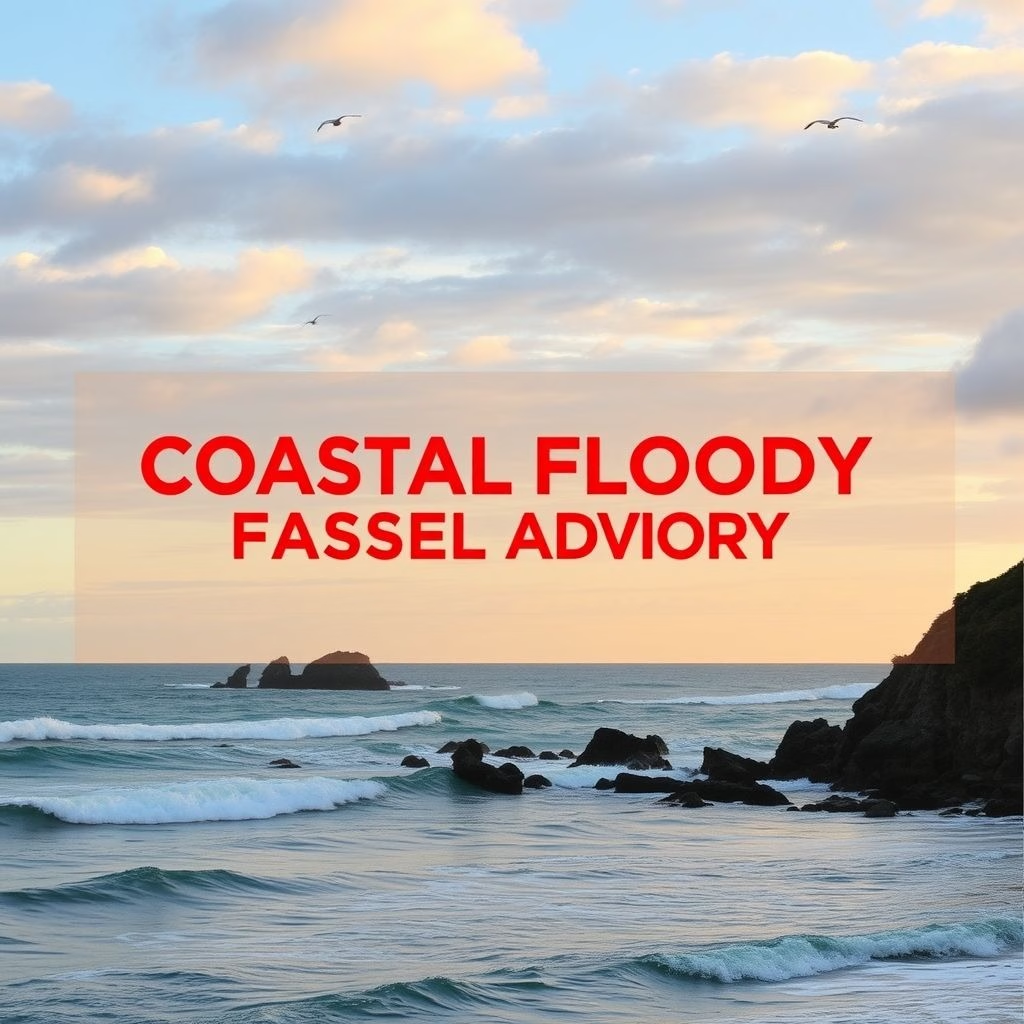Understanding Coastal Flood Advisories: Your Guide to Staying Safe

Navigating Coastal Flood Advisories: What You Need to Know
Coastal communities face a unique set of challenges, and one of the most significant is the threat of flooding. Understanding coastal flood advisories is crucial for residents and visitors alike. This guide provides a brief overview of how to access vital information from the National Weather Service (NWS) and stay informed about potential hazards.
The Role of the National Weather Service (NWS)
The National Weather Service, a branch of the National Oceanic and Atmospheric Administration (NOAA), is your primary source for weather-related information, including coastal flood advisories. The NWS provides detailed forecasts and warnings to keep communities informed and safe from hazardous weather events. Their expertise in predicting and monitoring coastal conditions is invaluable.
Accessing Coastal Flood Information
The most direct way to stay informed about coastal flood advisories is through the National Weather Service. The NWS website provides a centralized location for accessing various weather products, including specific advisories and warnings related to coastal flooding. These advisories are essential for planning your activities and preparing for potential impacts.
NOAA’s Comprehensive Approach
As an agency, NOAA supports the NWS in its forecasting efforts, providing the scientific and technological resources needed for accurate and timely weather information. The close collaboration between NOAA and the NWS ensures that communities receive the most up-to-date information about coastal hazards. This partnership is critical to helping people stay informed and make informed decisions.
What Information to Expect in a Coastal Flood Advisory
A coastal flood advisory alerts the public to potential flooding conditions, indicating that conditions are favorable for flooding. A coastal flood advisory is different from a coastal flood watch or warning. A watch means that flooding is possible, and a warning signifies that flooding is expected or occurring.
The advisory will typically include information about:
- The specific areas affected (e.g., coastal counties, specific beaches, or low-lying areas).
- The expected timing and duration of the flooding (e.g., during high tide).
- The potential impacts (e.g., road closures, damage to property).
- Recommendations on how to stay safe (e.g., avoiding flooded areas).
It’s important to remember that the details will vary. Always consult the specific advisory for the most relevant information.
Importance of Staying Informed
Coastal flooding can pose significant risks to life and property. Staying informed about advisories is the first step to ensuring your safety. Regular monitoring of the NWS website, as well as local news and emergency management channels, can help you stay ahead of potential hazards.
Additional Resources
For further information and details, you can consult the following resources.
Sources:
https://nowcoast.noaa.gov/
https://forecast.weather.gov/product_sites.php?site=NWS&product=CFW
https://resilience.climate.gov/maps/22726ed54d804f3e9134550406520405/about




